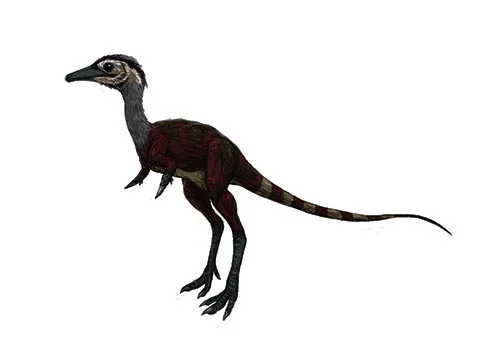Shuvuuia (bird)

Shu-vu-e-ah
L. M. Chiappe, M. A. Norell & J. M. Clark - 1998
Insectivore/Omnivore
Estimated 60 cm long
Small Theropod
S. deserti (type)
Mongolia - Djadochta Formation
Late Cretaceous, 80 million years ago
Shuvuuia Facts
Shuvuuia, meaning “bird” in Mongolian, is a genus of small theropod dinosaur that lived during the Late Cretaceous period, about 80 million years ago. Its fossils have been found in Mongolia and it is known from a nearly complete skeleton.
Shuvuuia was a small bipedal dinosaur, measuring about 60 centimeters (2 feet) in length and weighing only a few pounds. It had a bird-like skull with large eyes and a toothless beak, and its neck was long and flexible. Its arms were short and slender, and its hands had long fingers that were likely used for grasping and climbing.
One of the most unusual features of Shuvuuia was the presence of large, blade-like structures on its tail called pygostyles. Pygostyles are usually found in birds and are used to support the tail feathers, but their function in Shuvuuia is not entirely clear. It has been suggested that they may have helped the dinosaur to balance or maneuver while running, or may have been used for display or communication.
Shuvuuia is an important dinosaur because it provides important insights into the evolution of birds and their close relatives. Its bird-like skull and pygostyles suggest that it was closely related to birds and may have been an early member of the bird lineage. Additionally, its small size and agile limbs suggest that it may have been an arboreal animal, living and moving among trees and branches.
Overall, Shuvuuia is a fascinating dinosaur that has contributed to our understanding of the diversity and evolution of the theropod dinosaurs, as well as the broader history of life on Earth during the Late Cretaceous period.



